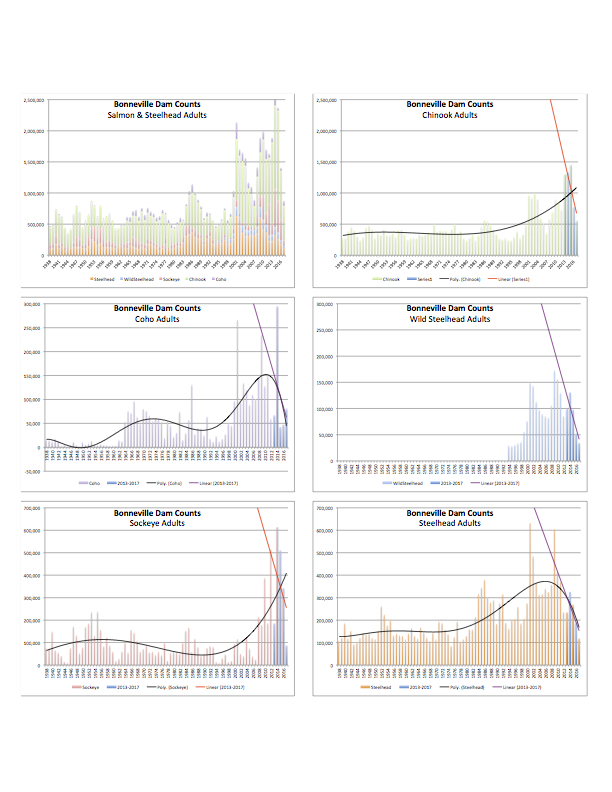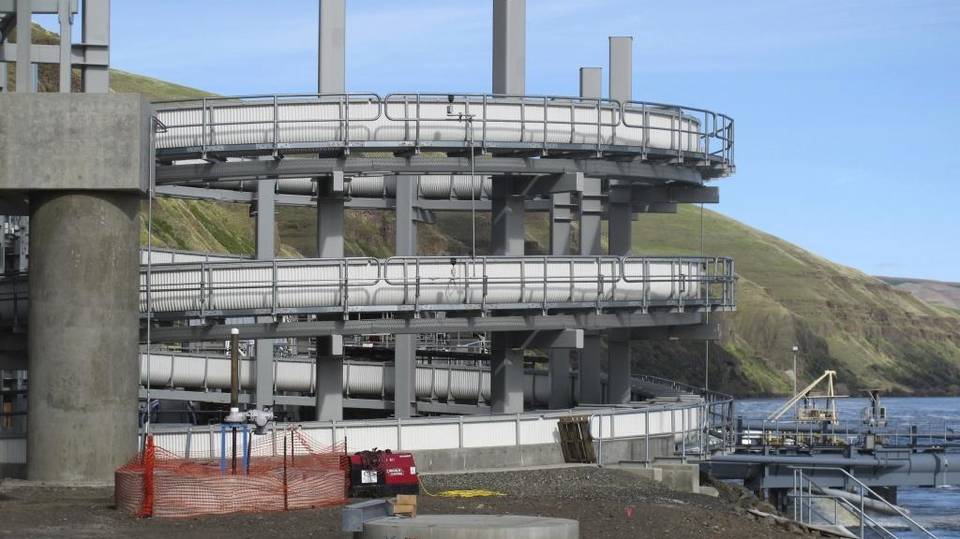forum
library
tutorial
contact

We Must Band Together to Protect Our
Most Important Regional Asset -- the Snake River Dams
by Utility Managers
Tri-City Herald, August 11, 2018
|
the film forum library tutorial contact |

|
We Must Band Together to Protect Our
by Utility Managers
|
Dams and salmon successfully co-exist.
 Over 20 years ago, the debate about the dams began.
Over 20 years ago, the debate about the dams began.
Some wanted the dams removed because they were concerned about the salmon runs. Others knew taking out the dams threatened low-cost power, river navigation, irrigation, and recreation.
Nearly 2,000 people representing agri-business, farms, utilities and other businesses rallied on the cable bridge that links Pasco and Kennewick to support the dams and reiterated that fish and dams could co-exist.
It's hard to believe the debate still continues today.
Since 1978, nearly $16 billion has been invested to protect fish. This includes improvements made to dams, habitat restoration, and hatchery programs.
Over the years, significant improvements have been made at the dams to improve fish survival since the early 1990s, and today the four Lower Snake River dams have some of the most advanced and successful fish passage systems in the world.
The result? Fish counts have trended upward and the dams are still keeping the lights on.
Yes, there are still challenges. Ocean conditions, predators, harvest and even the dams are obstacles for the fish. Yet the overall salmon returns in 2015 were the highest on record since counts began at Bonneville Dam in 1938.
Despite the billions of dollars invested and the increase in fish survival, there is still the ongoing push to remove the dams with no consideration to the benefits. The hydro system provides low-cost, reliable, carbon-free power that supports our economy. The dams also enable navigation, irrigation, flood control and recreation.
(bluefish notes: The Army Corps of Engineers will confirm to fact checkers that the Lower Snake River dams do not provide flood control. In fact, Lower Granite Dam has increased the risk of flooding of Lewiston, Idaho.)The dams fund fish conservation and restoration programs paid by utility customers through their electric bills. Between 10 and 20 percent of the typical electricity bill for a Northwest family or business goes to pay for fish and wildlife programs.
The benefits of the dams are often downplayed. Few seem to know that the four Lower Snake River dams are part of a complex Northwest energy solution with the capability to generate over 3,000 megawatts of power, enough for over 800,000 average U.S. homes. Because of their location and the generator sizes, these dams are critical links in the synchronized operation of the Northwest's federal hydropower system.
Dams provide a reliable, constant source of power that is always available and enables integration of intermittent renewable resources such as solar and wind, which are not available when the sun is not shining and the wind is not blowing.
The Northwest's demand for electricity is highest in the winter. The four dams provide critical winter energy and capacity to serve regional loads. Because of the seasonal variation in power flow, the additional generation available from the dams provides improved voltage stability and reliable transmission grid performance.
According to BPA, Ice Harbor Dam is critical from the transmission operations point of view, because it provides essential support for both power and voltage to the Tri-Cities area.
The multi-purpose Snake River dams -- Lower Granite, Ice Harbor, Little Goose and Lower Monumental -- work hard for our region. The long-term investment in the dams' structure and updated operations have successfully improved passage for better salmon survival. Dams and salmon successfully co-exist.
Join us at RiverFest on Sept. 8 in Columbia Park, Kennewick. This family event will have fun activities, interactive exhibits and food vendors from 11 a.m. to 3 p.m. to celebrate the benefits of the hydrosystem and the Snake River dams.

learn more on topics covered in the film
see the video
read the script
learn the songs
discussion forum
